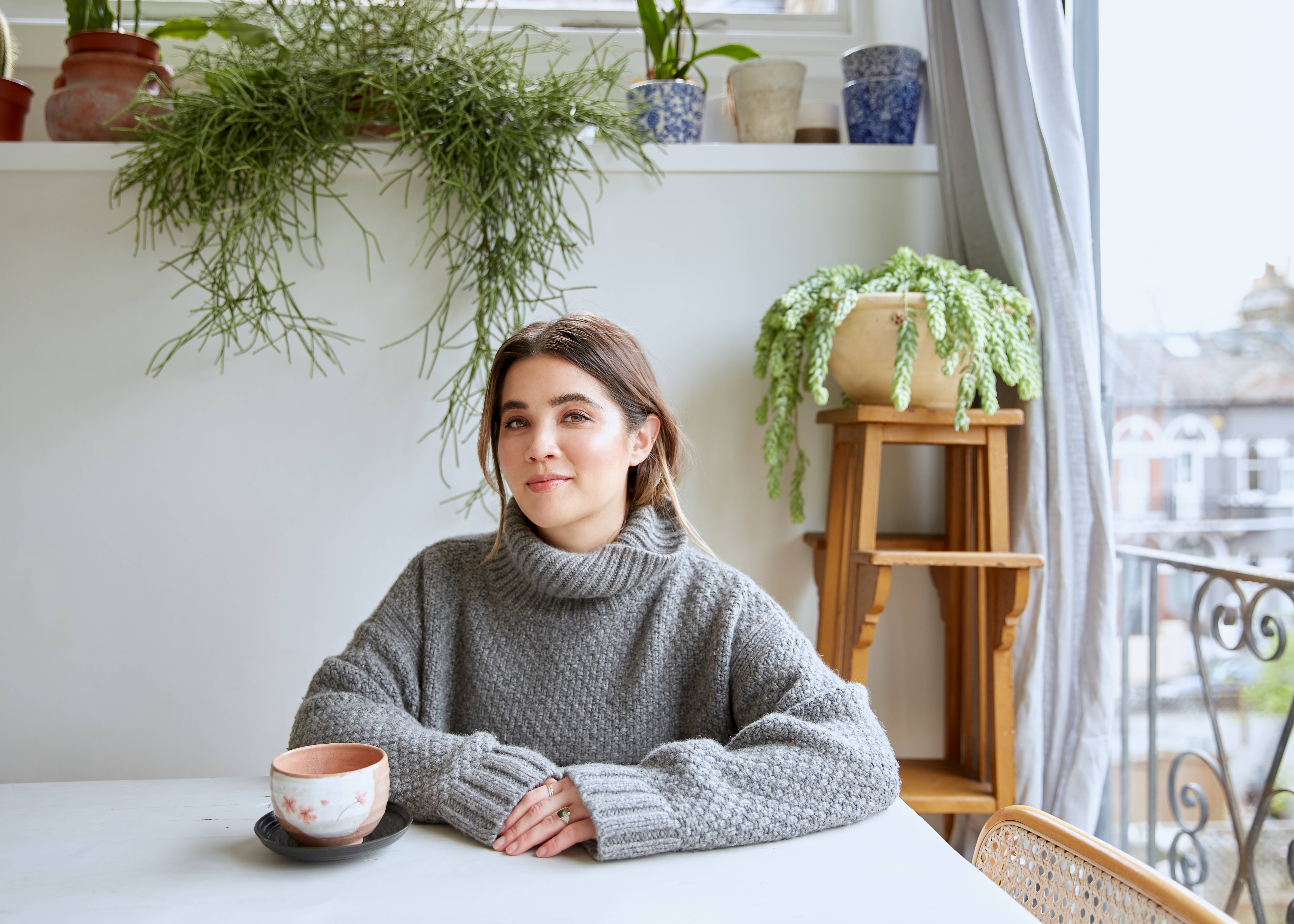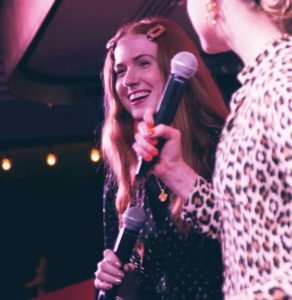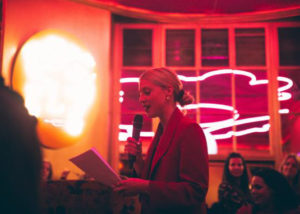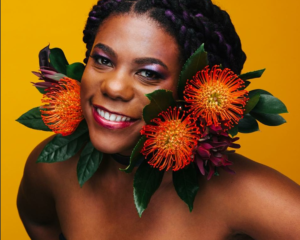
#MyParadymProcess: Amelia Abraham
Paradym speaks to journalist, author and editor, Amelia Abraham about LGBTQ+ culture, politics & emotional identity
6 MINS
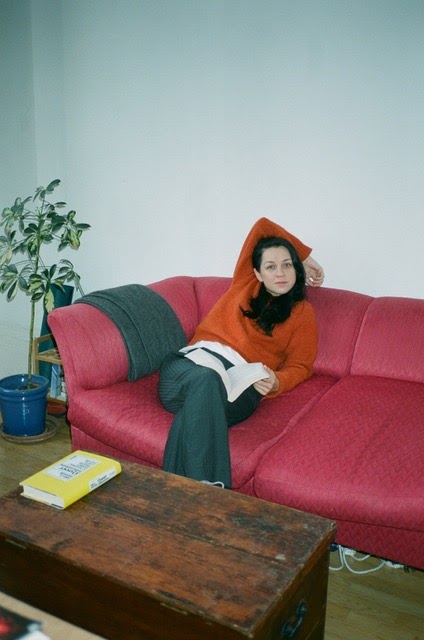
Amelia Abraham is a journalist, author and editor from London currently working for publications including Vice, Refinery29, Dazed as well as The Guardian, i-D magazine and Vogue. Amelia writes on a broad range of subjects but her work has had a consistent focus on LGBTQ+ culture and politics throughout her career with her 2019 book Queer Intentions: A (Personal) Journey Through LGBTQ+ Culture born out of this area of interest.
Being LGBTQ+ herself, Amelia says she is trying to make sense of her own identity, as gender-fluid, bisexual, and later a lesbian has encouraged her to look outwards. She explain that ever since she “came out” she has been given so much by queer culture and queer people that she feels commited to paying the community (or “family” as Amelia puts it) back by spreading information.
We chose to spotlight Amelia because we feel her work speaks beautifully to the Paradym process exploring everything from the fluidity of expressions of love and sexuality as well as the multifaceted nature of our individual identities. We spoke to Amelia about three key Paradym pillars: awareness, love and identity.
We believe self-awareness is the foundation of any kind of personal development. What does self-awareness mean to you?
Self-awareness is about checking in with yourself: are you behaving in the way that you want to? Projecting the self you want to project into the world? Making yourself happy? Taking control of your wants and needs as best you can? Living by your values?
How do you think self-awareness plays out or different for members of the LGBTQ+ community eg. the process of ‘‘coming out” to friends and family or “transitioning” genders?
I interviewed Peppermint, from Ru Paul’s Drag Race recently, and she said that often queer, trans and gender-nonconforming people have to be more self-aware. If you’ve experienced a period of being in the closet, you are hyper-aware of your behaviour and how it might be interpreted. You are in a very conscious dialogue with yourself about who you are. If you are trans, you’re often at risk, so you’re very conscious of how people perceive you, your safety, your place in a world that is often against you from the outset. Peppermint says that undergoing these experiences makes many LGBTQ+ – and specifically trans – people very in touch with themselves. A nice way of thinking about things!
Brave individuals and activists! And not just LGBTQ+ activists. Things like the American Civil Rights Movement or the first few waves of feminism really informed Gay Liberation and vice versa, because they are all about questioning dominance, and regaining power and self-worth. Saying we are not less than because we are a people of colour, women, gay and so forth.
In 1970, for example, Huey Newton, the founder of the Black Panther Party, delivered a speech called “A Letter to the Revolutionary Brothers ad Sisters About The Women’s Liberation and Gay Liberation Movements,” talking about how the movements are connected and should support one another. Without these movements, we wouldn’t be where we are today.
As well as being down to the work of activists, past and current, I think this has been accelerated by the internet and the visibility it affords LGBTQ+ people. We can log on to Instagram and follow a trans pop star from Brazil or visit YouTube and watch vloggers talking about being pansexual. We can use Facebook or Twitter to organise protests, sign petitions and ask governments for changes in law, which then, in turn, shift public perceptions and cultural attitudes. Linguists and sociologists have talked about how the internet accelerates the creation and use of new words, which is part of the reason we now have access to so many different terms to describe our gender expression or sexualities.
Do you have any advice for people who are struggling to embrace more fluid expressions of love and sexuality?
Use the internet or other forms of media to explore what the options might be, if it is safe to do so. One reason I wrote Queer Intentions – in which I go to eight countries and meet a real mix of queer people – was so that, when you read it, you get to see all these different models of what your life could look like. From being trans and Muslim to being a gender-nonconforming drag queen to leaving behind your country in search of a place you can be more openly gay.
Talking to people you know in a newer deeper way about relationships and desire, meeting new people with different experiences, trying new things with a partner are all good steps, if it is safe to do so. Sometimes you have to change up the people around you, or the place you’re in, in order to be more true to yourself. This is hard and a process and should only be undertaken when the time is right.
Like expressions of love, there is increasingly a leaning towards a broader, more multifaceted understanding of identity. Why do you think this is and how is this playing out for the LGBTQ+ community?
Growing inequality and wealth divides coupled with a sense of injustice or oppression along race, class and gender lines are making us reexamine our political affiliations – and look to one another. Social media is more individualised and makes us critically ask “who am I?” and “how do I want to present myself to the world?”
Someone I interviewed for my book said to me “I’m a minority of one” – this is true for all of us, we each have a completely personal perspective on the world informed by our very particular set of experiences. While groups or categories can be used to oppress us, organising ourselves within them can make us stronger too.
I am very grateful for the fact that travelling around the world meeting and talking to people – and particularly LGBTQ+ people – from different walks of life has opened up my mind to the variety of human experience. But I don’t think you have to be a journalist to do this – travelling and interacting with people who are not like ourselves can do this for any of us. This will not only help us understand our own sense of identity, but others too.
We are committed to helping people understand their identity in the broadest sense but we are particularly interested in the notion of emotional identity. Evidence suggests people identifying as LGBTQ+ are at higher risk of mental health issues. Why is this?
People who are LGBTQ+ are often at higher risk of mental health issues because of stigma. For a long time, it has been considered wrong or immoral to be gay, bisexual, lesbian, transgender, queer, asexual, intersex and more. The shame that is placed on LGBTQ+ people for being themselves, and the stress that comes with fearing for your safety, as well as the lack of infrastructure and specific support for LGBTQ+ people are what causes us to have mental health issues.
If we collectively start to think of identity as something totally individual, as something that changes over time, something to be celebrated and learnt from, I think we will increase empathy and reduce hate. The knock-on effect of that would be to improve LGBTQ+ people’s mental health.
Your Emotional Identity
How would you characterise your emotional identity?
Hopefully emotionally intelligent! My feelings change a lot, and very quickly (something exes have commented that it is hard to keep up with!) so with age, I have tried to learn that it’s important to sit with my emotions and not make any rash decisions or draw any conclusions too quickly. I usually find that within a couple of days, the way I feel has totally changed again. Which can be comforting but also exhausting!
In the Paradym process, schemas/patterns play a significant role. What are your negative emotional patterns for yourself?
I have many negative emotional patterns! But the biggest I would say is “a fear of putting all of my eggs in one basket” – I spread myself very thinly across my work, across friendships and across relationships. Part of that is about enjoying multiplicity and new experiences – a good thing – but part of it is about fear of investing, fear of failure, fear of abandonment – a more negative thing. I often find myself in the situation that I am doing too many things and as a consequence, doing none of them well. This is something that I try to be conscious of, and manage day-to-day, but it is something I really need to work on in the long run!
What has helped you overcome these patterns?
Awareness came with age. You get to know yourself better as time goes on. What has helped me the most with this issue is, firstly, to some degree, accepting this in myself. Often our best quality is the reverse side of the coin of our biggest failing. It’s good that I am super social and have a lot going on, but it becomes a problem when I am unable to give things the attention or care they need. Learning to say no to things is really important and recognising that is ok has really helped.
Recent Posts


Podcast: Using feelings to build habits & mental acrobatics
